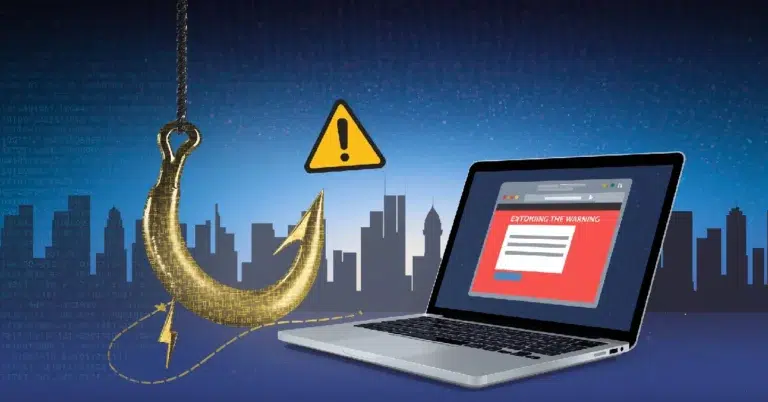
文章探讨了“点击诱饵”骗局如何通过夸张标题吸引用户点击恶意链接以获取个人信息。这种诈骗利用人类好奇心和心理操控手段进行传播,并通过伪装可信人物或组织来增加可信度。防范措施包括验证链接来源、使用多因素认证及加强网络安全教育。 2025-10-17 09:10:17 Author: securityboulevard.com(查看原文) 阅读量:33 收藏
Have you ever come across a headline like “Could the Golden Gate collapse?” or “The surprising news released by Real Madrid”? These sensationalized headlines are crafted to immediately grab attention and compel clicks. While they may seem harmless, they often lead to clickbait scams—a deceptive form of phishing that exploits human psychology to steal personal information.
What Are Clickbait Scams?
Clickbait scams are deceptive online tactics that use sensationalized headlines or offers to entice users into clicking on malicious links. These links often lead to phishing sites designed to steal personal information, install malware, or commit financial fraud. Unlike traditional phishing emails, clickbait scams are often embedded in seemingly harmless content, making them harder to detect.
Must-Have Features of Clickbait
Almost any type of content—blogs, news stories, interviews, infographics, or even a simple meme—can be turned into clickbait if it’s presented effectively. The secret isn’t the content itself; it’s how it’s packaged to grab attention. Here are the key features that make content irresistible:
The headline is the most important element. It teases with drama, surprise, or mystery, leaving readers wanting answers. This curiosity triggers the urge to click and see what happens next.
Clickbait works because it’s short, clear, and engaging. Long explanations don’t work here—just bite-sized content that keeps readers scrolling and hungry for more.
Images, GIFs, or memes make content visually appealing and grab attention quickly. Humans process visuals faster than text, so strong visuals—like expressive thumbnails with bold colors or dramatic text—can spark curiosity even before the headline is read.
Clickbait thrives on social sharing. People forward content that’s dramatic, funny, or shocking, which spreads the reach and brings in more clicks. This viral factor is why content is often designed to encourage shares.
Scammers use images of famous personalities or urgent emails to trick users into clicking links. These links may promote fake investment schemes, install malware, or steal login credentials.
Clickbait often appears as sensational news, surveys, or ads promising unrealistic rewards. Users clicking these links may end up on sites that steal personal information, prompt fake virus scans, or request payment for nonexistent products, such as “Get a Free iPhone” offers.
How Are Victims Lured into Clickbait Scams
Victims are often drawn into clickbait scams through a combination of psychological manipulation and deceptive tactics:
Scammers create counterfeit profiles on platforms like Facebook or Instagram, often impersonating celebrities, influencers, or trusted organizations. These profiles share sensational content or exclusive offers, building credibility and enticing users to click on malicious links.
Posts are crafted to evoke curiosity or urgency, such as “You won’t believe what happened next!” or “Limited time offer!”. These headlines prompt users to click without hesitation, leading them to fraudulent websites designed to steal personal information or install malware.

What Are the “Pros” and “Cons” of Clickbait?
Pros:
- Increased Engagement: Clickbait headlines can significantly boost click-through rates, attracting more visitors to your content.
- Enhanced Visibility: Sensational headlines often go viral, leading to broader exposure across social media platforms.
- Revenue Generation: Higher traffic can translate into increased ad revenue and potential monetization opportunities.
Cons:
- Erosion of Trust: If the content doesn’t align with the headline, users may feel deceived, leading to a loss of credibility.
- High Bounce Rates: Misleading headlines can result in users quickly leaving the page, negatively impacting SEO rankings.
- Brand Reputation Damage: Overuse of clickbait can harm a brand’s reputation, making audiences wary of future content.
The Rising Risk of Clickbait Phishing & Why Cyber Hygiene Matters
Clickbait scams are increasingly being used as a vehicle for phishing attacks. Cybercriminals craft enticing headlines to lure users into clicking malicious links, leading to compromised personal information or system breaches. Maintaining proper cyber hygiene with the support of StrongBox IT is essential to protect your systems and data.
- Regular Software Updates: Keep all systems up-to-date to protect against vulnerabilities.
- Strong Password Policies: Use complex passwords and update them regularly.
- User Education: Train employees and users to recognize suspicious links and emails.
How to Protect from Phishing Scams
- Verify Sources: Check the authenticity of emails or messages before clicking any links.
- Use Multi-Factor Authentication (MFA): Add an extra layer of security with multiple verification steps.
- Employ Anti-Phishing Tools: Use software that detects and blocks phishing attempts.
- Educate Users: Keep users informed about the latest phishing tactics and safe practices.

How Does Clickbait Work?
Clickbait exploits the “curiosity gap”—the desire to know more. Headlines are crafted to provoke curiosity without giving full information, compelling users to click to satisfy that need. This psychological trigger is powerful, but when the content fails to deliver on the headline, it can lead to frustration and diminished trust.
Tips to Avoid Clickbait Scams
To safeguard against clickbait scams, both individuals and businesses should adopt the following practices:
- Scrutinize URLs Before Clicking: Always hover over links to preview the destination URL. Ensure it matches the official website’s domain and doesn’t contain misspellings or unusual characters that could indicate a fraudulent site.
- Verify the Source: If a message or post seems suspicious, confirm its authenticity by contacting the purported sender through official channels. Avoid using contact information provided in the suspicious message itself.
- Educate and Train: Regularly conduct training sessions for employees to recognize and report phishing attempts. Awareness is a critical defense against social engineering tactics used in clickbait scams.
- Implement Robust Security Measures: Utilize advanced security tools, such as email filters and web monitoring software, to detect and block malicious content before it reaches end-users.
By staying vigilant and informed, individuals and organizations, with support from StrongBox IT, can significantly reduce the risk of falling victim to clickbait scams.
Clickbait scams are a deceptive form of phishing that exploit human curiosity to steal personal information. By recognizing the tactics used, understanding the features of clickbait, and following best practices, both individuals and organizations can protect themselves from these malicious schemes.
Protect your business from clickbait scams—contact StrongBox IT for expert cybersecurity solutions today.
如有侵权请联系:admin#unsafe.sh
